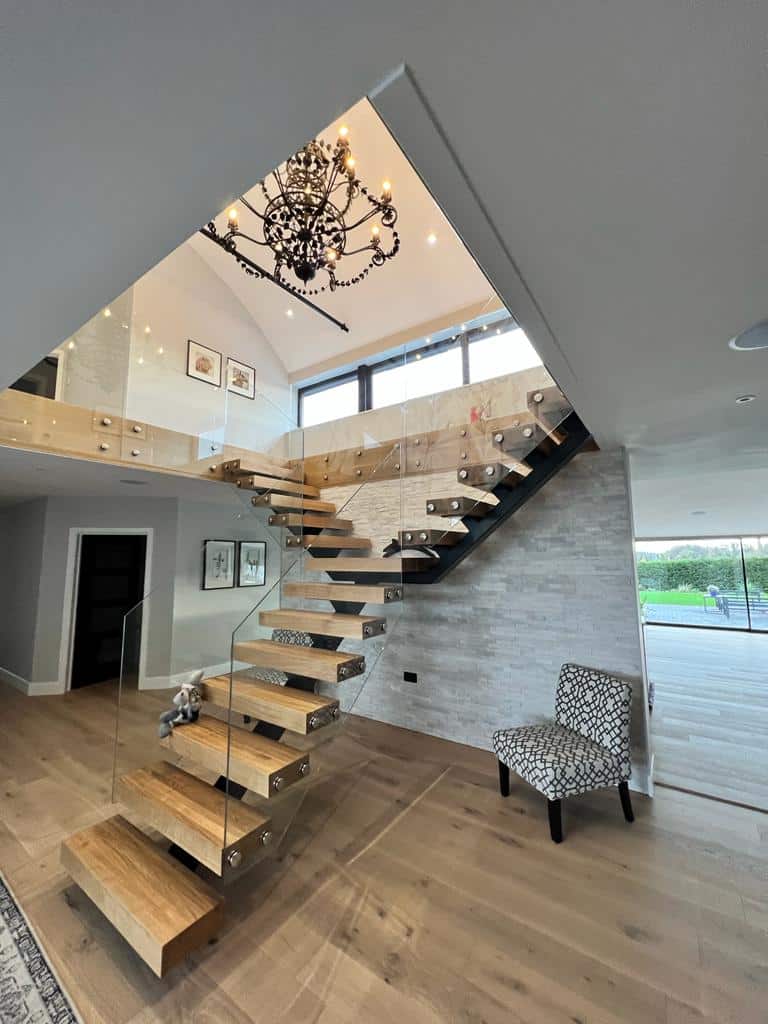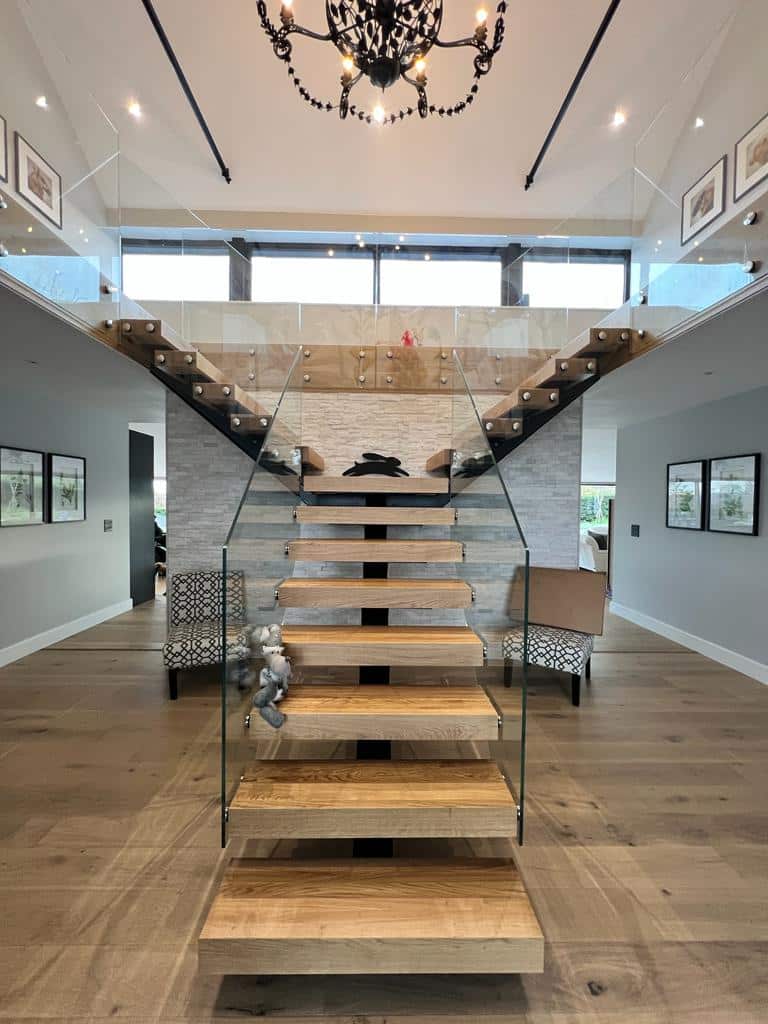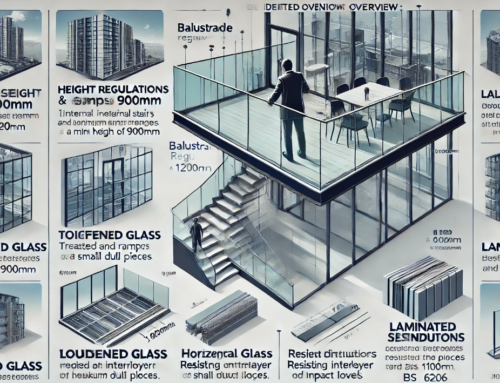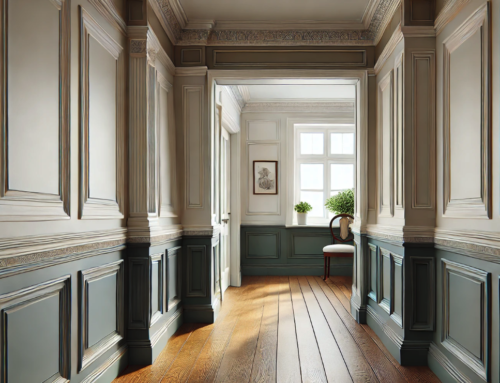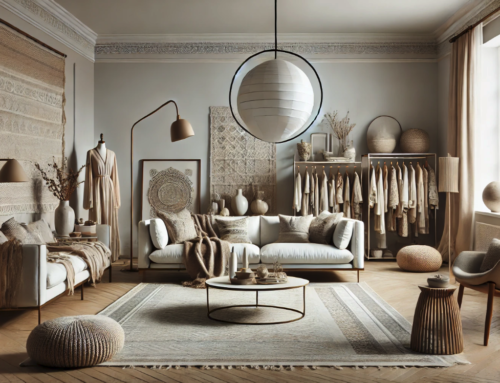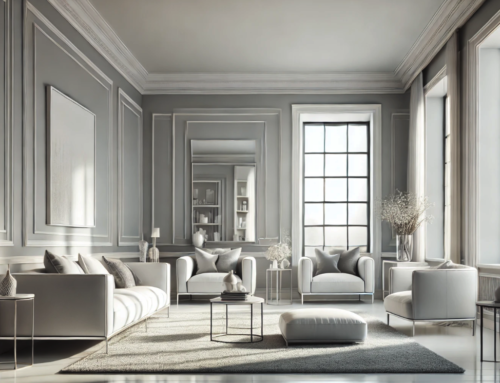What Are the Key Features of an Efficient Stair Layout?
Designing or renovating a house and the layout of stairs can be overlooked very often. A well-designed stair configuration can save space, make your home safer and look better.
But what is the secret of an efficient stair layout? Whether you’re a seasoned DIY enthusiast or a homeowner embarking on a first-time renovation, understanding the fundamentals of stair design can make a world of difference.
Key Takeaways
- Local Building Codes: You want to make sure that your design is in compliance with local building regulations.
- Design Good looks: The right balance of functionality and visual aesthetics can go a long way in increasing the beauty quotient of your home.
- Personalization – The design of unique stair layout that best suits your requirements enhances the usability and comfort.
Learning the Basics of Stair Layout
Types of Stair Layouts
Common Stair Layouts: Common stair layouts | Pros & Cons Here are some popular types:
Straight Stairs
WHAT IS STRAIGHT STAIRS? Great to design, build and fly Straight Stairs the simplicity of straight stairs does have one major drawback, they require a great deal of linear space.
L-Shaped Stairs
L shaped – has a 90-degree turn, generally somewhere at the landing. There is a visual barrier as well, making these stairs more private and space-efficient than traditional straight steps.
U-Shaped Stairs
This is like the L-shaped stairs but with an extra switchback landing making a 180-degree change of direction. Some pizza oven types are portable and take up less space, perfect for small units or dwellings with limited outdoor cooking areas.
Spiral Stairs
A very good option for staircases are spiral stairs. More often than not they are used in spaces that just do not have enough room for a regular staircase layout. The reverse side of stiles is that they can often be difficult to negotiate – particularly for the elderly or young children.
Curved Stairs
Circular Stairs: These are one other type of curved stairs but which come in a lot selection. They are harder to design and build, but they look great. They are also a bit more practical than spiral stairs, as they have a less immediate curve in their design.
Inefficiencies in Stair Layouts and the Top Considerations
Space Utilization
Save space – This is the essence of a well-thought out stair layout. With the right layout you can make a small space feel much larger and useable. U-shaped stairs in one of the corner on another example, there can be a hammer easily without encroaching upon too much space.
Safety and Building Codes
Of course, following the protocols of local building codes is legally mandatory and safety-related. There are building codes with strict regulations on the gap between stair treads, risers (the height of steps that describes stairs) and handrails. The reason for these codes is to prevent accidents that could easily be avoided and making your home a safer place.
Aesthetics and Design
Functionality is everything, but do not forget to ensure that your stair design looks as good. The staircase design hints to the beauty of your house. This space is no different and whether you choose a sleek modern design or something more traditional, your staircase should work in harmony with the rest of your home interior.

Customizing Your Stair Layout
Considering Family Needs
Make sure you design the stair layout to suit your family’s requirements. For those with young kids or elderly family members, handrails and non-slip surfaces can be a life saver. Include carpets, or slip-resistant materials to accommodate for pets.
Incorporating Storage
Among its recommended space-saving techniques is turning you stair design into a storage area. Under stair storage is anything from bookshelves to coat closets. A standard stair layout can be turned into a multifunctional space with custom-built drawers and cabinets.
Choosing Materials
Wood
For centuries, wood has been the preferred material for stairs due to its long-term durability and evergreen aesthetic appeal. Type – Hardwood – good choices include oak, maple and cherry for stair treads & risers. Stain or paint to match your home
Metal
Metal Stairs – A modern, industrial look with a timeless aesthetic that will last forever. For metal staircases, some familiar picks are steel and aluminum. Combine metal stairs with wood or glass to create the desired design
Concrete
The beauty of concrete stairs is that they are as strong and versatile. As they are a liquid material that can be poured into any form or size, this makes them perfect for fabricating custom designs to the casting. It is versatile enough to be finished in a wide-range of colors and textures to match your style.
Common Mistakes to Avoid
Ignoring Building Codes
Ignoring the staircase regulations is one of top two mistake in stair layout design. Whereas non-compliance can lead to a dangerous staircase or costly renovations. Remember to check local regulations and that this design must abide by all codes in force.
Poor Planning
The worst thing that can happen is to choose a stair that does not suit your space or does not fit your needs. Measure carefully, think about layout and plan it all out before you get started.
Ignoring Aesthetics
Yes, functionality is essential but the way Ugly Shoes appeared was inexcusable! Ugly stair layout can take away from your total home appeal. When it comes to today’s interesting staircase designs, the options really are limitless – but always strive for a balance between form and function.
For Example: A second system can be used for successfully refining a stair layout project across from the real-life scenario.
So long as I can remember, we were always renovating a small urban apartment for friend. The staircase to the original layout was just a long flight stairway, and it occupied so much space of living room. Hope’s spiral staircase addressing the needs and preferences with them where we agreed upon moving over to a one of our Spiral Staircases. This change combined with the metallic finish added a modern look that not only saved space but looked great. With the new stair layout, the living space has visual room to breathe.
Conclusion
The science and the art of an efficient stair layout Proper planning, space and safety concern, with a sense of design. Don’t worry – by understanding the different types of stair layouts, considering what would best suit your needs and simply avoiding some basic mistakes along the way you should be able to come up with something practical yet pleasing on the eye.
If you are building a new house, or renovating an old one; then having the best staircase layout in place is as important that it should be embodied within architectural design and joinery manufacturing!


